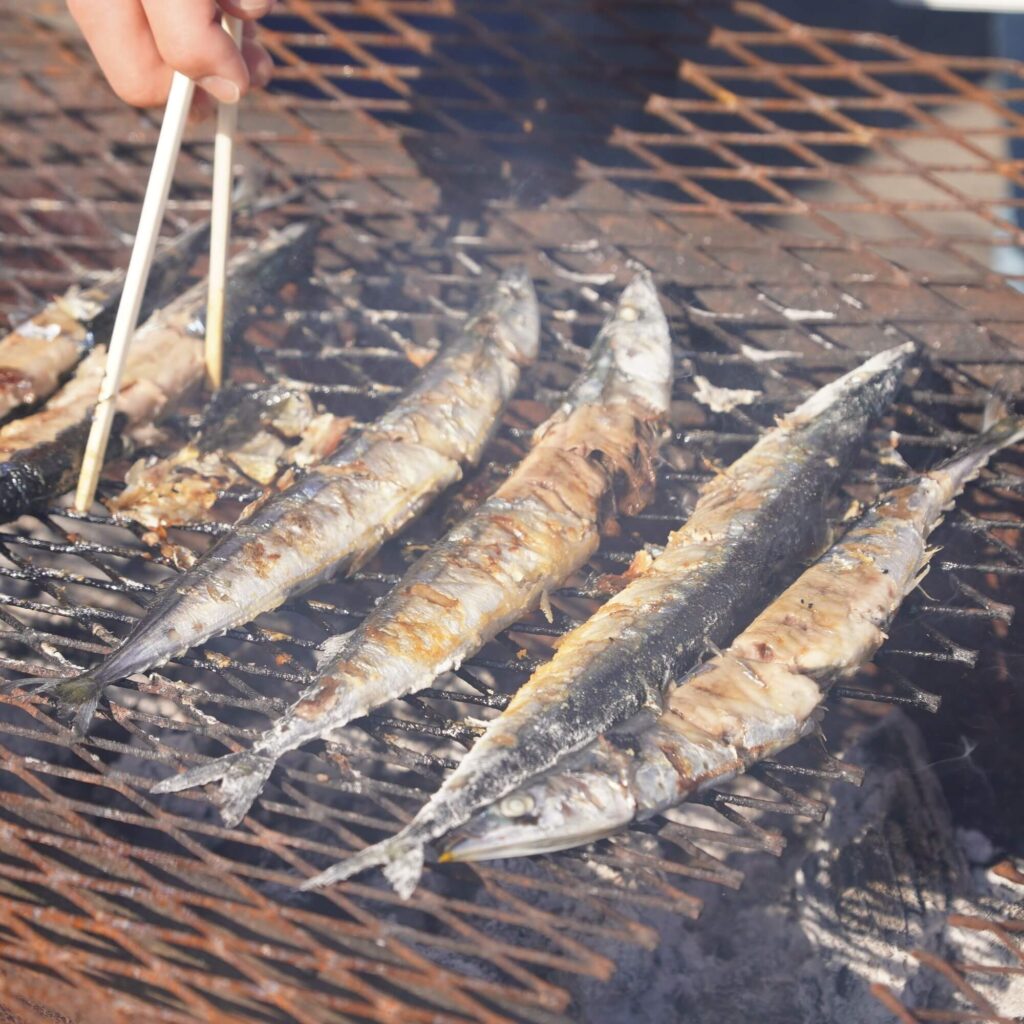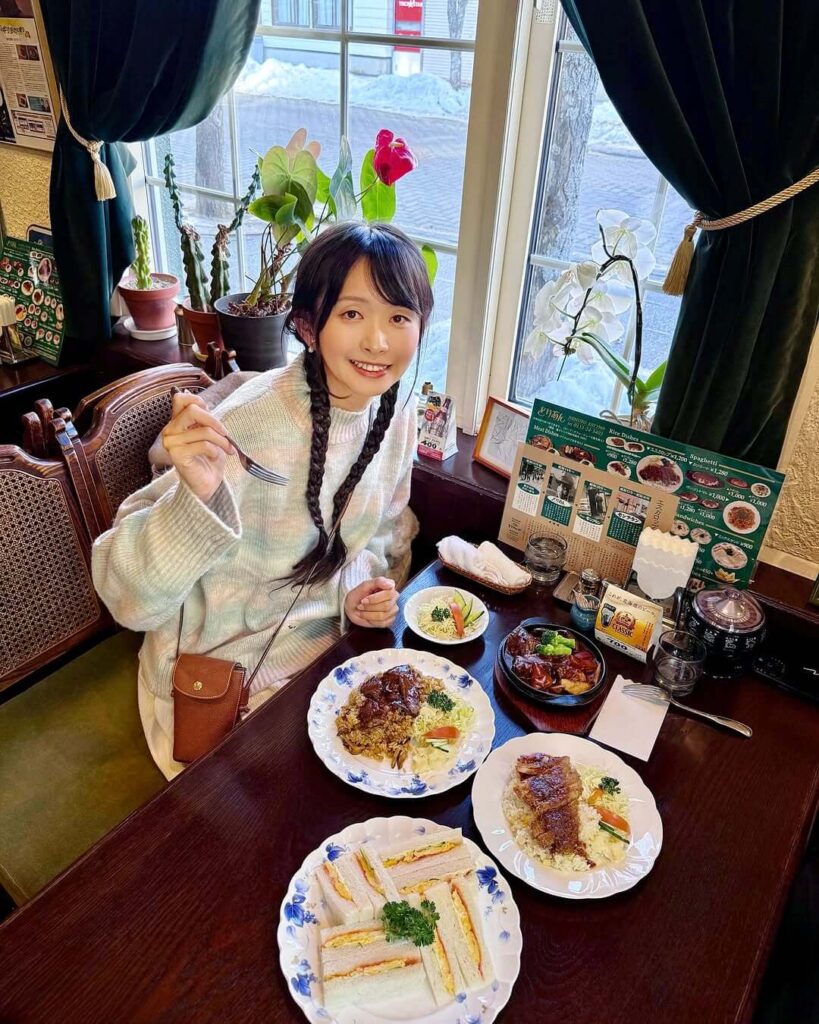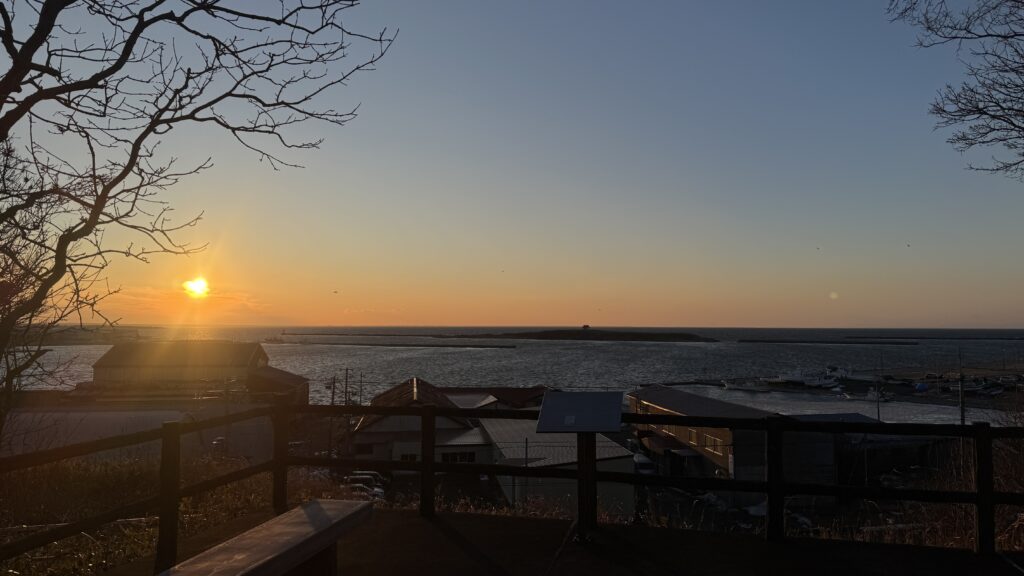▶The Battle of Music and Strength, held in the evening after the mikoshi parade on the second day. The floats from the four sections gather at the otabisho (rest spot) and the bearers perform ohayashi (musical accompaniment) and play taiko drums.

Things to Do

The pride of Nemuroites: Behind the scenes of the Kotohira Shrine Reitaisai Festival
The biggest event of the year for any shrine is its grand festival, called Reitaisai. And Kotohira Shrine in Nemuro takes it to a whole new level—the lively August festival is considered one of Hokkaido’s top three biggest festivals. You’ll be captivated by the stunning procession parading through the streets, featuring glittering portable shrines (mikoshi) and floats (dashi) creatively designed by members of each parade section. So immense is its cultural significance that in 2020 the event was designated as an Intangible Folk Cultural Property of Hokkaido. This festival is a source of great pride for Nemuro locals, so we took a look behind the scenes.
A local festival with over 200 years of history
Kotohira Shrine’s Reitaisai Festival began in 1888. It’s held over a period of three days, reaching its climax with the mikoshi parade on the final two days. Along with the shrine parade, there are parades through four sections that together cover a 1km stretch of the city. Each mikoshi holds a deity, and as the parade makes its way through the streets, people pray for the safety of their community and a bountiful harvest. Nemuro has been a city of devout believers since its early days as a port city, and the lavishness of its Reitaisai Festival reflects this.
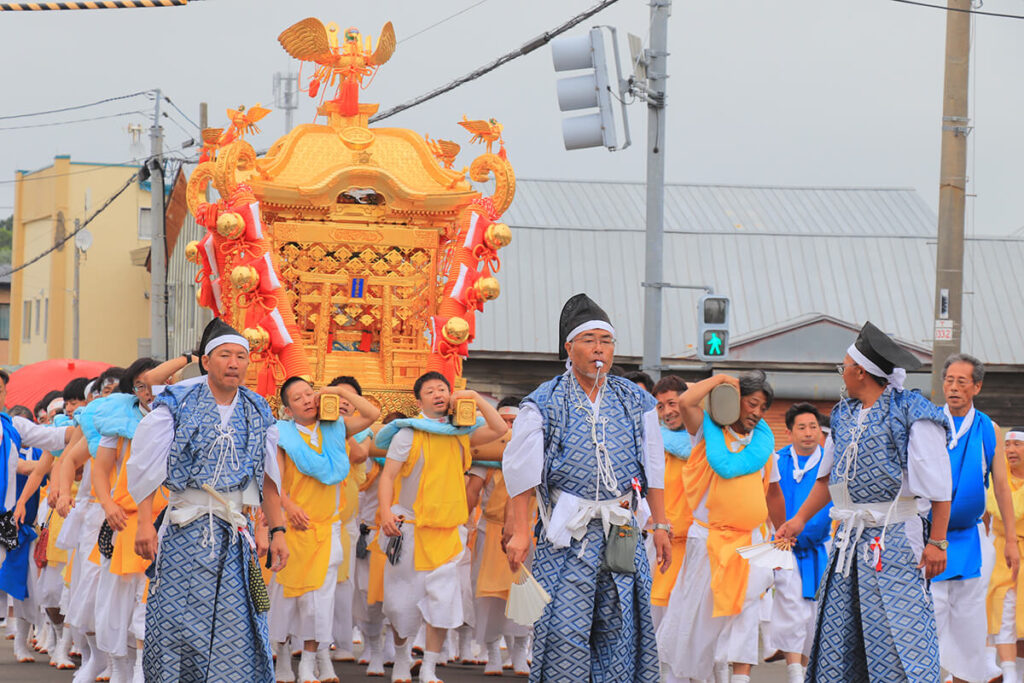
▶The shrine parade. The parade starts with a yakko-gyoretsu (a procession wearing traditional dress) followed by an actor playing Sarutahiko, the leader of the earthly kami (deities) in the Shinto faith, along with shrine maidens (miko), a lion dance (shishi-mai) and ceremonial floats. The portable shrines (mikoshi) are carried by young members of the community. (Photo provided by Kotohira Shrine)
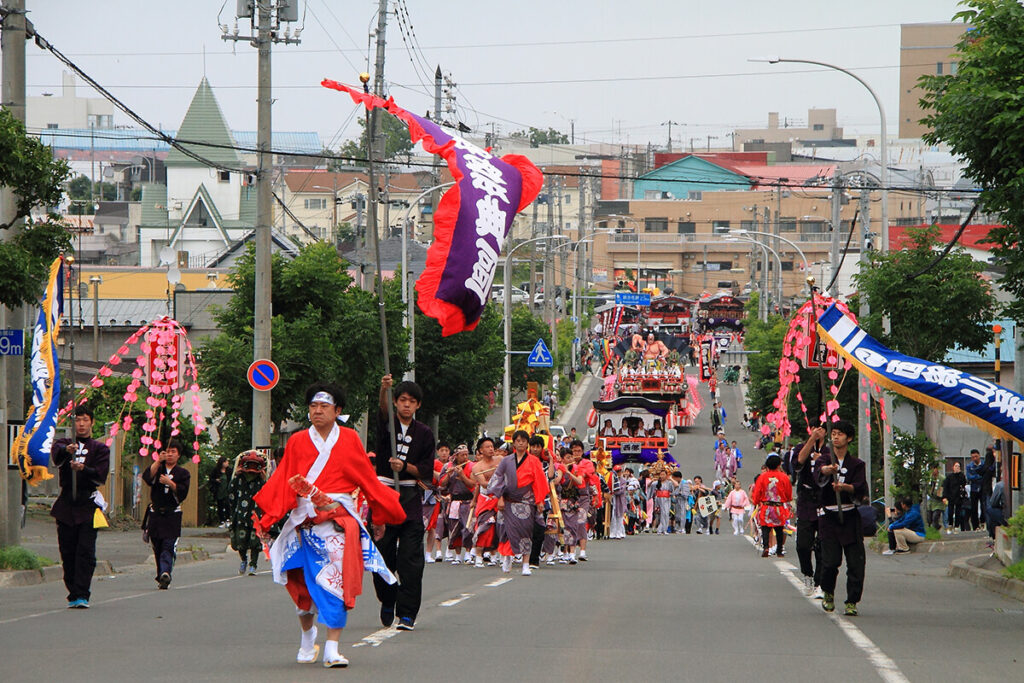
▶The other parade sections, following behind the shrine parade. (Photo provided by Kotohira Shrine)
The most important element of this festival is people. Those mikoshi weigh 1.5 tons including the carry bars, and it takes 120 people to carry each one through the streets. The bearers are chosen by the 16 organizations under the umbrella of the Kotohira Shrine Mikoshi Association.
Each organization is training up the next generation of mikoshi bearers, and every parade section—the Western Section, the First Section, the Eastern Section and the Third Section—requires different techniques. Each section is divided into 10 groups, including flag bearers, taiko drummers, staff bearers and float bearers. Keep your eyes and ears peeled for the differences between each section’s taiko music and float designs. These methods are taught to high schoolers, young adults and even children.
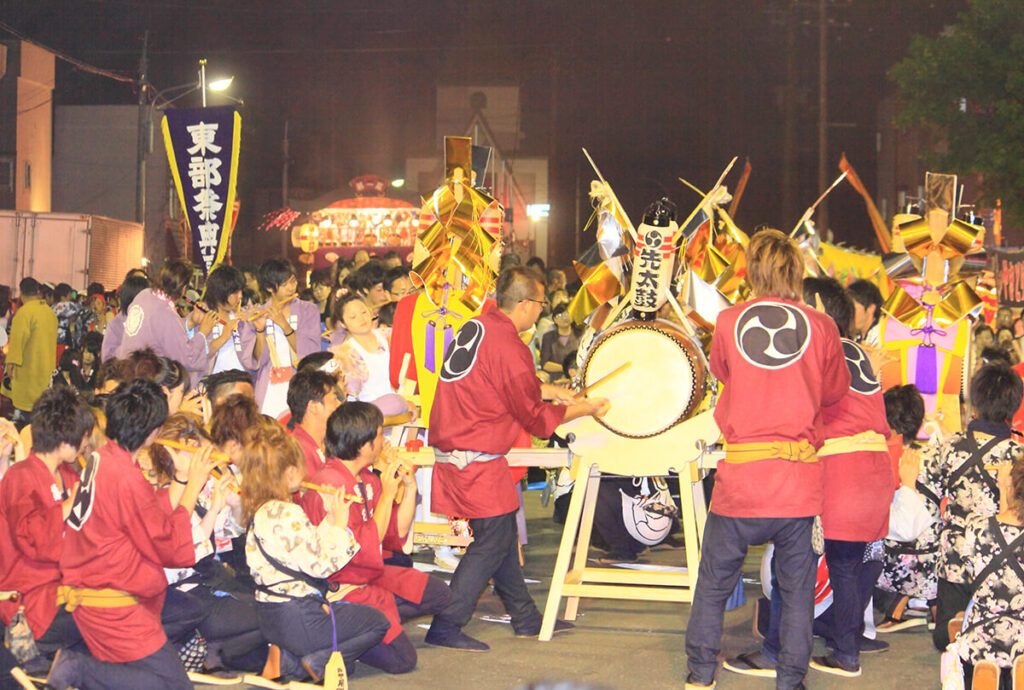
The traditions and mindset that need to be passed on
Due to the disruptions created by COVID-19, 2023 marked the first Reitaisai Festival in four years. Jou Maeda, the guji (chief priest) of Kotohira Shrine who took the reins of the festival, says “We were really worried about whether we’d be able to hold a festival on the same scale as before.”
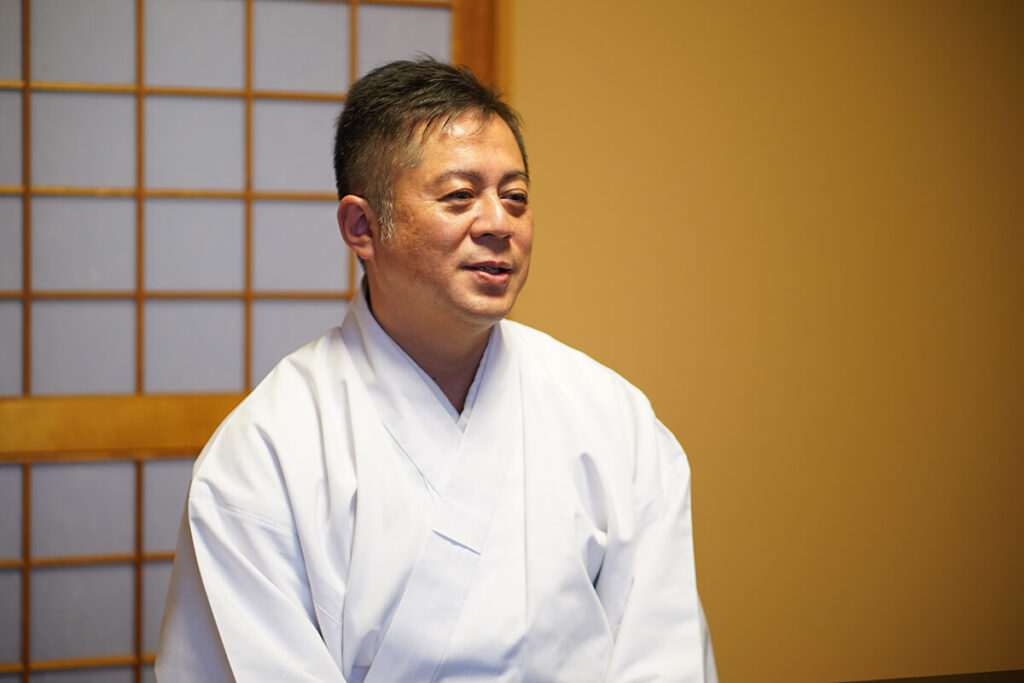
▶Jou Maeda, who became the guji of Kotohira Shrine in July 2023.
Because so much time had passed since the previous Reitaisai Festival, the organizers faced a variety of issues. The population had declined and so had local businesses, so there were concerns about finding enough people, whether people still remembered the techniques, and whether people were even still interested in the festival. The organizers allowed extra time for planning, beginning preparations in November of the previous year, and changed the schedule for the first time in 104 years to make it easier for people to participate. A vast team gave 100% to make the festival a success after its long pause. It was amid these events that Mr. Maeda became the new guji in July, right before the festival. Looking back, Mr. Maeda says “From the shrine to each of the parade sections, there was a sense of pride in the traditions we have carried to today, and a will to make this festival a success. But I also felt the responsibility and the pressure keenly. I knew we had to preserve and pass on the long tradition of this festival.”
Mikio Sato, the president of the liaison committee for the parade sections, echoes Mr. Maeda’s sentiments, saying “It was difficult to get enough people.” Most vital were the children who would pass on the traditions in future. “Culture like this can only be preserved if there are people continuing it. The reason we have festivals is because of people who have lived in the area since their childhood and are familiar with its traditions. A festival of this size isn’t something that can be planned overnight.” The organizers recruited people through various avenues, making leaflets, submitting articles to newspapers and reaching out to schools.
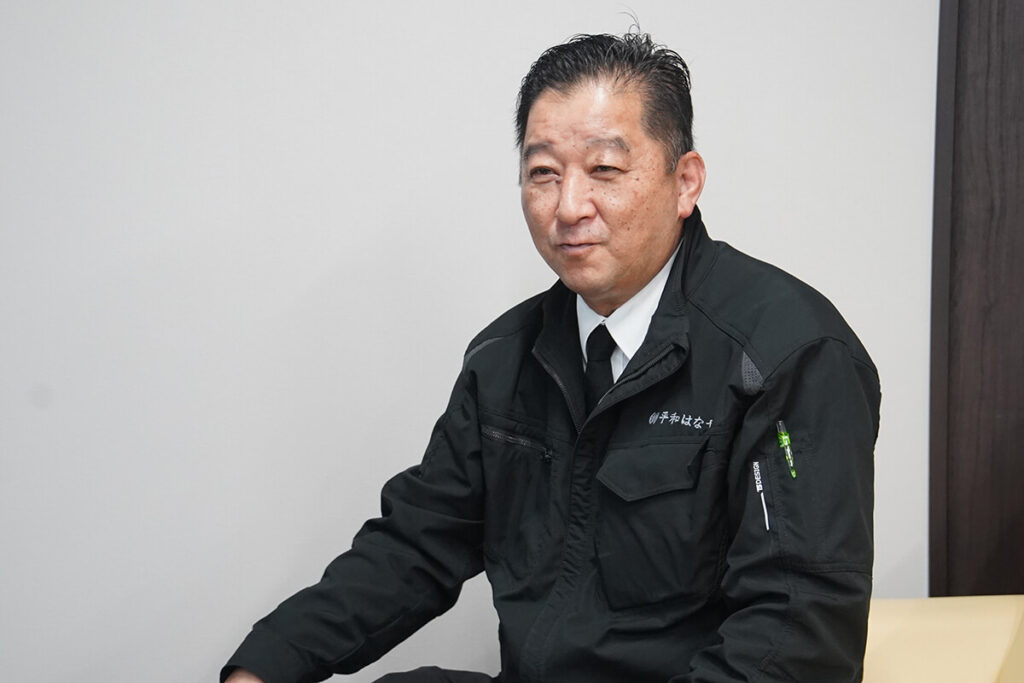
▶Mikio Sato. His liaison committee plays an admin role for the respective parade sections, and is indispensable when it comes to the job of coordinating the many people involved in each section.
At last the big day came. The streets of Nemuro came alive for the first time since before the pandemic, with 1,100 people in the parade and 130 stalls. It wasn’t quite back to its old glory, but nonetheless the streets and the venues of the evening events were packed with merrymakers. It was the moment Nemuro locals had been waiting for. “When I heard the taiko music live that first day, I was so moved that I almost burst into tears,” says Mr. Maeda. “I’d heard it in videos the three years we couldn’t hold the festival, but it wasn’t the same.”
On future festivals, he says “I want to accept the changes that are necessary to preserve this tradition, without losing the spirit of it.” There’ll still be people carrying the mikoshi—the pride the feat inspires means that there’s no shortage of volunteers. And the taiko drumming, hayashi music and floats are here to stay, because of the way they reflect the unique character of each section. The organizers are taking a realistic view, but the core traditions won’t change. We can expect to enjoy Kotohira Shrine’s Reitaisai Festival for years to come.
Local pride made tangible
There’s a museum about the Reitaisai Festival in the grounds of Kotohira Shrine. It was opened 17 years ago so that people can experience the festival all year round. Here you can see the real mikoshi and floats from the festival, along with countless photos and items from the festival, capturing its energy and excitement.
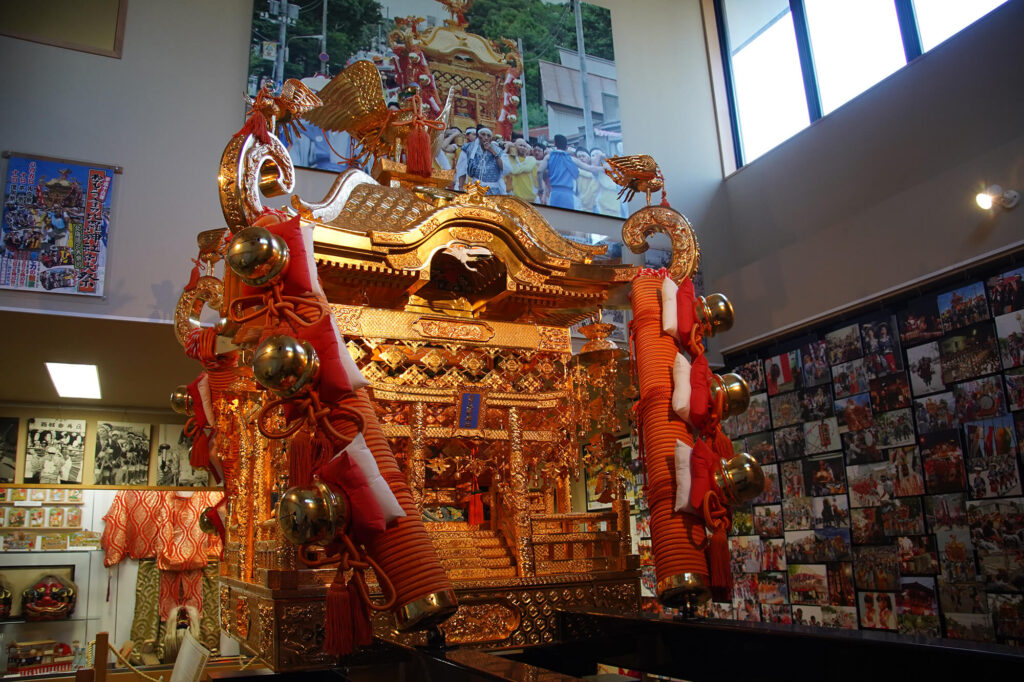
▶Videos of the festival are screened in the museum and the walls are covered with photos, capturing the energy of the festival. It’s a popular spot among tourists, and even locals like to check it out from time to time.
As I gathered for this article, what shone through was the community’s passion for preserving this tradition. What has lived on through the centuries is not only the techniques of the festival but a passion for the festival and a sense of pride in the community as a whole. Deeply moved, Mr. Maeda said “Everyone’s pride in the festival is the greatest source of its appeal. You can see how much everyone wants to pass it on to the next generation. It touches my heart.”
Yes, Kotohira Shrine’s Reitaisai Festival is the result of the passion felt by each generation of Nemuro locals. I want to see it for myself one day.
Information
Kotohira Shrine
1-4 Kotohira-cho, Nemuro City
Phone: 0153-23-4458
Opening hours (Shrine Office, Mikoshi-Den Hall and the Festival Museum): 8:30 am to 5:00 pm
*Open 9:00 am to 4:30 pm during the winter period (January 15th to March 15th)
*The shrine is open 24 hours for worshiping.
Related Articles
#festival #seafood #charmsofnemuro
#seafood #yakitoribento #esukaroppu #localfood
#birdwatching #wildbirds #charmsofnemuro



